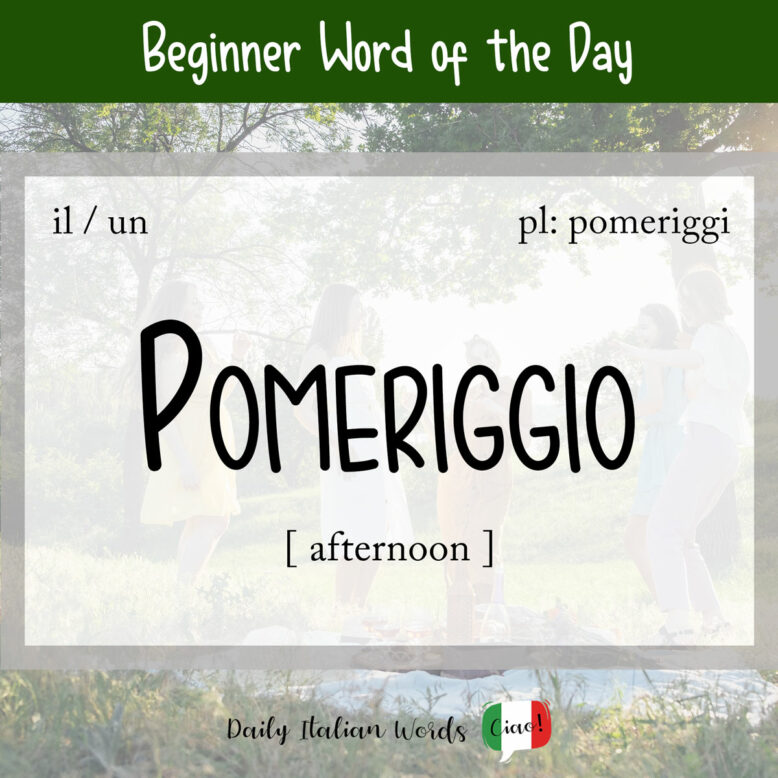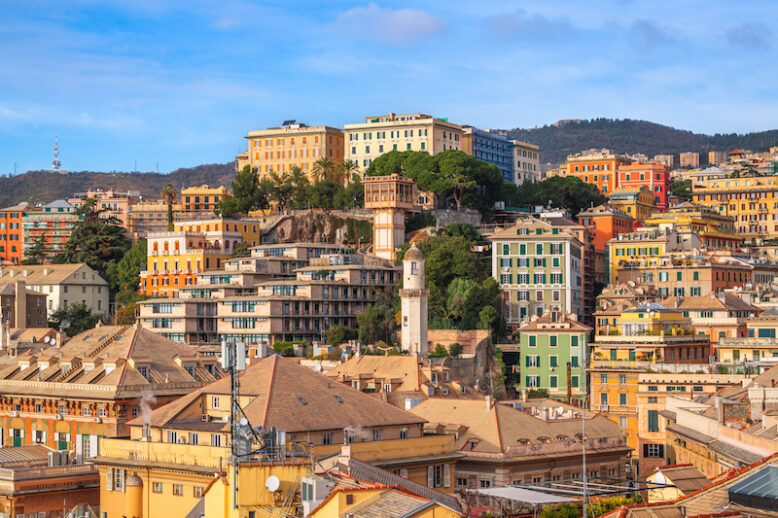What comes after il mattino (the morning) and precedes la sera (the evening)? Il pomeriggio (the afternoon), of course!
pomeriggio
afternoon

According to Treccani, this term is a cross between the Latin adjective pomeridiano (the adjective “afternoon”) and meriggio (a synonym for mezzogiorno – midday – that refers to the hours at which the sun is at its warmest and highest in the sky).
Ci vediamo questo pomeriggio!
See you this afternoon!
Pomeridiano, an adjective that also exists in Italian, is the combination of post ‘after’ and meridiem ‘midday‘, so it literally means “after midday“.
Mio padre fa sempre un sonnellino pomeridiano.
My father always has an afternoon nap.

Pomeriggio, whose plural form is pomeriggi, is a masculine noun, so it takes the following definite and indefinite articles:
- il pomeriggio = the afternoon
- un pomeriggio = an afternoon
- i pomeriggi = the afternoons
- dei pomeriggi = (some) afternoons
In Italian, the expression for good afternoon is buon pomeriggio. However, contrary to what you might expect, this greeting isn’t used very frequently. Italians usually go directly from buongiorno (good morning) to buonasera (good evening).
Buon pomeriggio!
Good afternoon!

Here are a few key time expressions containing pomeriggio you’ll need to learn:
primo pomeriggio
early afternoon
oggi pomeriggio
this afternoon
questo pomeriggio
this afternoon
tardo pomeriggio
late afternoon
nel pomeriggio
in the afternoon
alle due / tre del pomeriggio
at two / three in the afternoon
Heather Broster is a graduate with honours in linguistics from the University of Western Ontario. She is an aspiring polyglot, proficient in English and Italian, as well as Japanese, Welsh, and French to varying degrees of fluency. Originally from Toronto, Heather has resided in various countries, notably Italy for a period of six years. Her primary focus lies in the fields of language acquisition, education, and bilingual instruction.


